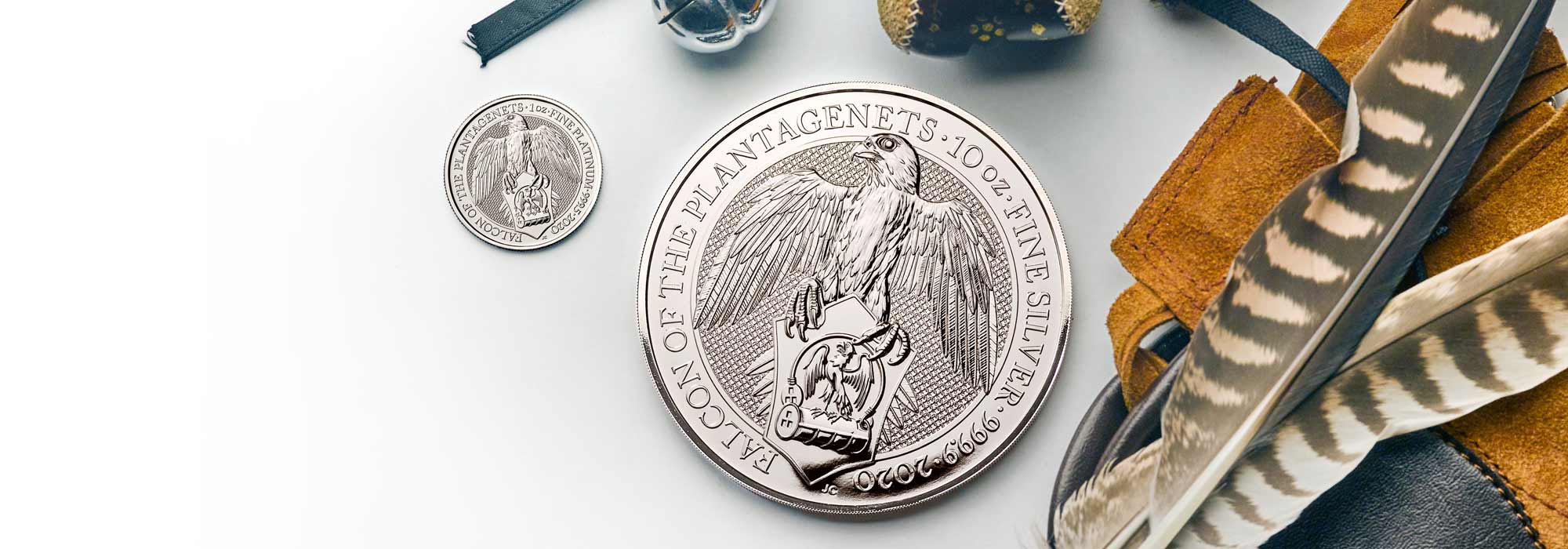
The Falcon of the Plantagenet’s
At Her Majesty The Queen’s coronation in 1953, the Falcon of the Plantagenet’s took its place as one of The Queen’s Beasts, alongside the lion, unicorn, dragon, griffin, yale, greyhound, horse and white lion. Let’s find out more about this ancient royal symbol and how it descends to the current monarch.
The Plantagenet Dynasty
The term Plantagenet identifies four interconnected royal dynasties: the Angevins, the Plantagenets, and the houses of York and Lancaster. Plantagenet monarchs ruled England from the crowning of Henry II in 1154 until the death of Richard III at the Battle of Bosworth in 1485.
This was a turbulent period in English history. Royal power was constrained by Magna Carta, and the Hundred Years’ War raged as a succession of English monarchs pressed their claim for the French throne, giving rise to the emergence of a distinct national identity.
A Medieval Status Symbol
Falcons have a long association with royalty. Trained birds were prized for their hunting ability and regarded as status symbols. In heraldry the falcon represents single-minded determination and if its shown perched this indicates suitability for high office, which is exactly what you’d want from a monarch.
It was first used in England by Edward III (1327–77) as a symbol of his love of hawking. He passed it to his great-great grandson Edward IV (1461–70 and 1471–83), the first ‘Yorkist’ king and one of the key protagonists in the ‘Wars of the Roses’.
The Falcon and the Fetterlock
At the coronation, the falcon held a shield depicting the personal badge of Edward IV – a falcon sitting atop a golden fetterlock – which is a common symbol in heraldry. It was used by Edward III’s younger sons John of Gaunt and Edmund of Langley, but is always shown locked in recognition of the line of succession. This one is partially open, signifying Edward’s claim to the throne and his struggle to advance it – he pushed the lock and took the throne.
This was a time of intermittent civil war caused by the weak leadership of the Lancastrian king Henry VI. This led to the revival of a rival claim to the throne through Edward’s father Richard, Duke of York. Richard was killed at the Battle of Wakefield in 1460, but a year later, after the decisive Battle of Towton, Edward seized the crown.
Edward gave the symbol to his younger son Richard of Shrewsbury, one of the two ‘princes in the tower’ who vanished, presumed murdered by their uncle Richard III. After defeating Richard III and marrying Elizabeth of York to unite the Houses of York and Lancaster, Henry VII often used a falcon symbol. It was also said to be the favourite emblem of Elizabeth I.
Discover great stories from history and how we're celebrating these moments within The Royal Mint
Read more
